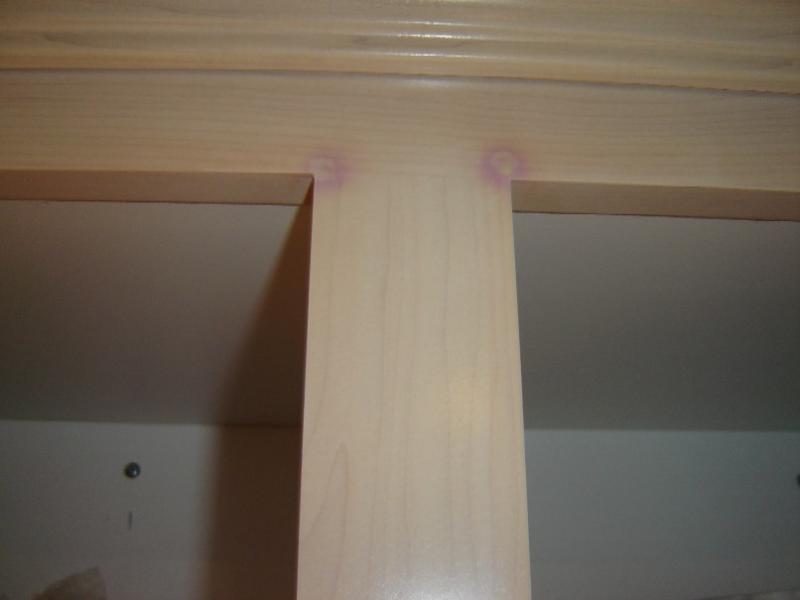Discoloration at Door Bumpers
Cabinetmakers puzzle over what seems to be some kind of chemical interaction between a soft door bumper and a lacquer finish. June 17, 2009
Question
We've been manufacturing cabinets for over 20 years and this is the first time I've seen this type of thing. About a year ago we switched what we were using for a door bumper. We went from a 3M clear plastic flat bumper to a bumper from Hafele that is softer and comes to a bit of a point. The idea being that the door doesn't make as much of a "clunk" when it closes. Recently I've had two customers who are experiencing a discoloration in the finish around where the door bumper makes contact with the finish. Both these jobs have what we call a frosted (white) stain so the discoloration is obvious. We use Becker fiesta for our lacquer. I've attached a picture. Has anyone seen anything like this before? Can it be repaired?

Click here for higher quality, full size image
Forum Responses
(Finishing Forum)
From contributor G:
It is possible that the adhesive has a slightly acidic property to it and might be similar to the catalyst in the finish. I know that if you over catalyze MLC Krystal it will turn pinkish over the next six months.
From contributor B:
The only way I see to repair this is, on the spot repair if possible, try using 0000 steel wool and lemon oil or 320 sandpaper and just kiss the surface to get it out then touch up with lacquer if you are using the 320 sand paper.
From Paul Snyder, forum technical advisor:
Looks like the rubber they used in the bumpers is reacting with the finish. I'd switch to a different kind to avoid the problem in the future. Some rubber compounds react with some coatings and cause contact discoloration or damage, or discoloration around the area of contact (migration staining). The rubber bumpers you're using are definitely causing a discoloration. ASTM D925 describes the steps to test for discoloration caused by the contact between rubber and various coatings.
From contributor B:
Paul's hit the nail on the head. To prevent this on other doors with the
Hafele bumpers a quick fix is a coat (drop) of shellac on the bumper.
From the original questioner:
Obviously I quit using that bumper but I have thousands of them out there. This discoloration is around every bumper on at least two jobs that I know of. I'm hoping there is a way to repair this on the job site. My finish guy went to one site and tried very fine wet paper trying to remove it but had no luck. To make matters worse, he tells me if we sand through the finish and stain it is the type of stain that is very difficult to touch up.
From contributor D:
I have been in the refinish/touch-up end of this profession for many years. I was never as happy as the day this finish was pushed to the side and more true wood tones came back into favor. That being said, this finish is difficult to repair due to a few factors. Whites come in a variety of shades and unless you hit them exactly, the repairs stand out. Also the clear coat has most likely oxidized to some level and this will also add to your matching dilemma. Your one saving grace may be the areas locations, that is , that they are not in normal site lines. I wish you the best of luck and if I could add one suggestion, it would be to use a solid colored (white) poly bumper possibly in a larger size to help hide some of the repair.
